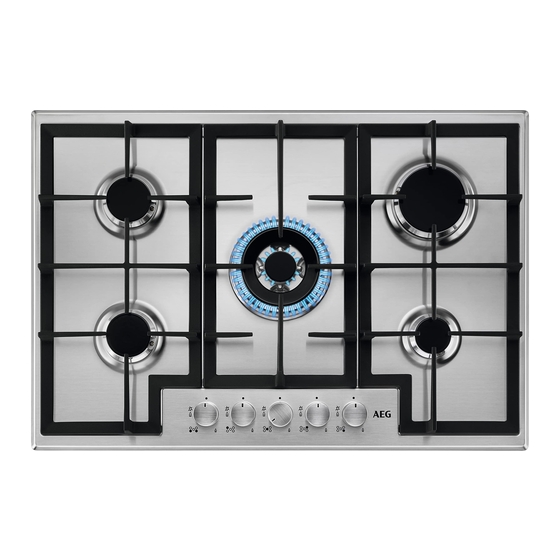AEG 6000 Series Manual do utilizador - Página 17
Procurar online ou descarregar pdf Manual do utilizador para Frigorífico AEG 6000 Series. AEG 6000 Series 24 páginas.
Também para AEG 6000 Series: Manual do utilizador (12 páginas), Manual do utilizador (24 páginas), Manual do utilizador (24 páginas)

Problem
Water flows on the rear plate
of the refrigerator.
There is too much con-
densed water on the rear
wall of the refrigerator.
Water flows inside the refrig-
erator.
Water flows on the floor.
Temperature cannot be set.
The temperature in the ap-
pliance is too low/too high.
Possible cause
Food products are not wrap-
ped properly.
Temperature is set incorrect-
ly.
Appliance is fully loaded and
is set to the lowest tempera-
ture.
Temperature set in the appli-
ance is too low and the am-
bient temperature is too
high.
During the automatic de-
frosting process, frost melts
on the rear plate.
Door was opened too fre-
quently.
Door was not closed com-
pletely.
Stored food was not wrap-
ped.
Food products prevent the
water from flowing into the
water collector.
The water outlet is clogged.
The melting water outlet is
not connected to the evapo-
rative tray above the com-
pressor.
The "Coolmatic function" is
switched on.
The temperature is not set
correctly.
The door is not closed cor-
rectly.
ENGLISH
Solution
Wrap the food products bet-
ter.
Refer to "Control Panel"
chapter.
Set a higher temperature.
Refer to "Control Panel"
chapter.
Set a higher temperature.
Refer to "Control Panel"
chapter.
This is correct.
Open the door only when
necessary.
Make sure the door is closed
completely.
Wrap food in suitable pack-
aging before storing it in the
appliance.
Make sure that food prod-
ucts do not touch the rear
plate.
Clean the water outlet.
Attach the melting water
outlet to the evaporative
tray.
Switch off "Coolmatic func-
tion" manually, or wait until
the function deactivates au-
tomatically to set the tem-
perature. Refer to "Coolmat-
ic function" section.
Set a higher/lower tempera-
ture.
Refer to "Closing the door"
section.
17
